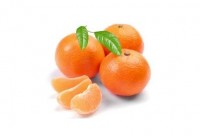
December 1- December 7, 2013
Market Outlook
Lettuce:
The Iceberg market is up a few dollars due to rain in Yuma.
Leaf:
Leaf market is steady with good quality out of Yuma.
Broccoli:
Broccoli supplies continue to improve and cost is near bottom.
Cauliflower:
Market is lower with better supplies.
Carrots:
No changes on jumbo carrots this week.
Celery:
The Celery market is steady, and may move lower after the Thanksgiving holiday. Quality has been very good.
Strawberries:
Supplies continue to remain tight and the market is steady. We have see minor quality issues on inbound and expect to see this continue as the California season winds down.
Potatoes:
The market has not changed on potatoes this week, quality has been good with #2 Idaho’s still on the bigger side.
Onions:
Market on onions has been getting stronger each week. Look for this market trend to continue.
Citrus:
Lemon supplies are improving, overall costs are steady. Oranges are steady, but shippers are struggling to come up with small fruit. 113’s and 138’s are particularly tough to find.
Cucumbers:
Cucumber market has come off this week. Quality has been only fair.
Peppers:
Pepper market has remained steady this week. Peppers are still having some sizing issues.
Tomatoes:
Tomato market is steady on rounds, romas, grapes and cherries. Supplies are limited.
Feature of the Week
This week Primo is featuring clementine’s. The Clementine is a hybrid variety, first grown in Algeria. This variety was introduced into California in 1914. It is an oblate, medium-sized fruit. The exterior is a deep orange color with a smooth glossy look. The Clementine separates easily into eight to twelve juicy segments filled with a taste of apricot nectar. Clementine Mandarins are available from mid November through January.
Recipe of the Week
Ingredients
4 to 5 clementines (about 1 pound total weight)
6 eggs
1 cup plus 2 tablespoons sugar
2 1/3 cups ground almonds
1 heaping teaspoon baking powder
Directions
Put the clementines in a pot with cold water to cover, bring to the boil, and cook for 2 hours. Drain and, when cool, cut each clementine in half and remove the seeds. Then finely chop the skins, pith, and fruit in the processor (or by hand, of course).
Preheat the oven to 375 degrees F.
Butter and line an 8-inch springform pan with parchment paper.
Beat the eggs. Add the sugar, almonds, and baking powder. Mix well, adding the chopped clementines. I don’t like using the processor for this, and frankly, you can’t balk at a little light stirring.
Pour the cake mixture into the prepared pan and bake for 1 hour, when a skewer will come out clean; you’ll probably have to cover the cake with foil after about 40 minutes to stop the top from burning. Remove from the oven and leave to cool, in the pan on a rack. When the cake is cold, you can take it out of the pan. I think this is better a day after it’s made, but I don’t complain about eating it anytime.
I’ve also made this with an equal weight of oranges and lemons, in which case I increase the sugar to 1 1/4 cups and slightly Anglicize it, too, by adding a glaze made of confectioners’ sugar mixed to a paste with lemon juice and a little water.
Fun Facts of the Week
- have been called the crown jewel of the citrus world. These tiny oranges are used in everything from salads and sauces to preserves
- Clementines are very often called “Christmas oranges” because their limited growing season falls during the winter
- Clementines are one of the few varieties of citrus fruits that are seedless


